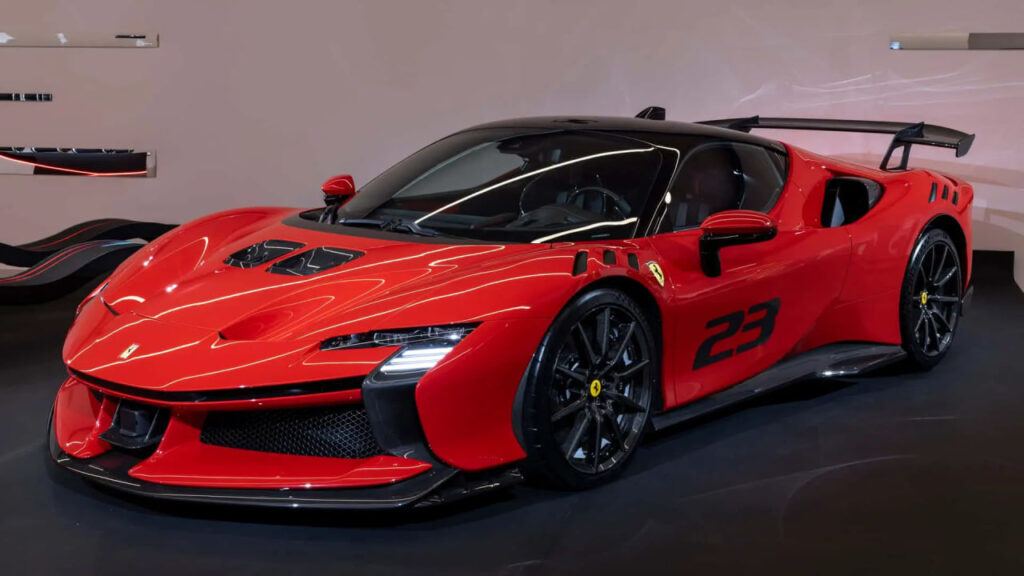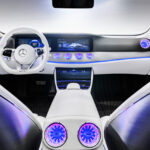Introduction to 2025’s Sports Car Landscape
The sports car market is on the brink of a transformative era as we head into 2025. With a potent amalgamation of design, advanced technology, and performance capabilities, today’s sports cars are poised to captivate enthusiasts and casual drivers alike. Current trends indicate a growing consumer demand for vehicles that offer breathtaking speed and embrace sustainability through hybrid and electric technologies. This shift towards more eco-friendly options does not compromise the quintessential aspects of a sports car. Instead, it enriches the driving experience by integrating cutting-edge performance with a reduced environmental impact.
Performance remains at the forefront of the sports car segment, with manufacturers focusing on refining aerodynamics, enhancing handling, and boosting horsepower. Innovations in powertrain technology, such as turbocharging and lightweight materials, contribute to an exhilarating driving experience while improving fuel efficiency. Furthermore, integrating advanced driver-assistance systems is gaining traction, enhancing safety without stifling the raw thrill that sports cars are revered for. As we look ahead, the presence of artificial intelligence in vehicle design will become more pronounced, optimizing performance in real time and providing drivers with unparalleled control.
Style plays an equally significant role in the appeal of sports cars. Consumers are increasingly pursuing models that highlight aesthetic excellence alongside raw power. The landscape showcases a trend toward more aggressive profiles, eye-catching color palettes, and bespoke interior finishes. These aspects are critical as brands strive to reflect a diverse customer base’s unique tastes and preferences. As the 2025 sports car market unfolds, the intersection of performance, style, and innovative technology will create vehicles that meet and exceed consumer expectations, setting a new benchmark in the automotive world.
Top 5 Performance Metrics to Look For
Several performance metrics stand out when evaluating premium sports cars in 2025 as essential indicators of a vehicle’s capabilities. Among these, horsepower is a foundational metric that defines the engine’s power output. A higher horsepower usually correlates with faster speeds and better acceleration, making it a critical factor in any sports car review. Manufacturers increasingly focus on maximizing horsepower through advanced engineering techniques, utilizing turbocharging and hybrid technologies to achieve impressive numbers.
Another vital performance metric, Torque, complements horsepower by measuring the engine’s rotational force. This parameter is crucial for off-the-line acceleration, as it affects how swiftly the car can start moving from a standstill. In many modern sports cars, torque delivery is engineered to peak at lower RPMs, allowing for impressive acceleration and enhanced drivability in everyday conditions.
Acceleration times, often measured from 0 to 60 mph, provide a clear snapshot of a sports car’s performance. The trend continually decreases in these times thanks to lighter materials and refined aerodynamics. Manufacturers also utilize cutting-edge traction control systems to optimize these metrics and ensure the best possible launch from a standstill.
Handling capabilities play a pivotal role in defining the driving experience. Sports cars are expected to provide precision steering, minimal body roll, and exceptional grip at high speeds. Innovations such as active suspension systems and dynamic torque vectoring are becoming commonplace, allowing manufacturers to enhance handling characteristics extensively.
Finally, braking performance is critical for both safety and driving enjoyment. A sports car must have high-performance braking systems, often using carbon-ceramic materials to offer better heat resistance and quicker stopping times. Advances in brake technology improve performance and contribute to the overall driving experience, ensuring that drivers can confidently navigate both the track and winding roads.
Innovative Technology in 2025 Sports Cars
As the automotive industry evolves, so does the technology integrated into sports cars. In 2025, sports cars are expected to feature substantial advancements that enhance performance and improve user experience. One of the most notable trends is the introduction of hybrid and electric powertrains, which are becoming standard in high-performance vehicles. These powertrains allow for impressive acceleration while reducing emissions and fulfilling regulatory changes and consumer expectations centered around environmental sustainability.
The performance of sports cars in 2025 will significantly benefit from innovations in engine technology. Manufacturers increasingly focus on optimizing combustion engines through turbocharging and direct fuel injection. Such advancements lead to more efficient fuel consumption without compromising power output. Additionally, the integration of lightweight materials, such as carbon fiber and aluminum, contributes to improved handling and agility by reducing the vehicle’s overall weight.
Another crucial aspect of 2025 sports cars lies in enhancing driver-assistance systems. These features, which include adaptive cruise control, lane-keeping assist, and automatic emergency braking, are designed to provide a safer driving experience without sacrificing the thrill of performance. Cutting-edge technologies like advanced sensors and machine learning algorithms allow these systems to function more intuitively, learning and adapting to the driver’s preferences and driving style.
Moreover, infotainment systems in 2025 sports cars are expected to incorporate the latest connectivity options, including seamless smartphone integration and advanced navigation systems. Voice recognition and gesture controls are becoming more common, allowing drivers to maintain focus on the road while enjoying an engaging multimedia experience. In conclusion, these innovative technologies are redefining the characteristics of sports cars and aiming to create a more connected, efficient, and enjoyable driving experience.
Design and Aesthetics: More Than Looks
In sports cars, design and aesthetics are pivotal in influencing buyer decisions. A vehicle’s appearance often serves as the first impression and can significantly impact a potential buyer’s desire to purchase. Consumers are drawn to sports cars for their performance and striking visual appeal, making it essential for manufacturers to invest heavily in innovative designs that captivate the market.
Current trends in exterior design are powerfully shaped by the principles of both form and function. Sleek lines and aerodynamic shapes are paramount for optimizing speed and performance, and manufacturers consistently work to harmonize these features with captivating aesthetics. The latest sports cars are often seen flaunting aggressive front fascias, sculpted sides, and prominent air intakes that enhance performance and lend an air of sophistication and sportiness to the overall look.
Equally important is the attention given to the interior design of sports cars. Ergonomics and comfort are increasingly prioritized as manufacturers recognize that a driver’s experience is critical to the overall enjoyment of the vehicle. High-quality materials, customizable interfaces, and supportive seating enhance the driving experience and cater to the expectations of discerning buyers. By integrating modern technology seamlessly into luxurious interiors, sports cars can effectively appeal to a broader audience.
Furthermore, utilizing lightweight materials, such as carbon fiber and aluminum, illustrates the fine balance manufacturers must strike between aesthetic appeal and performance efficiency. The choice of materials contributes to the car’s overall design and plays a significant role in improving speed and handling. Maintaining this equilibrium is essential for success in the competitive sports car market, where every detail counts in fulfilling the desires of speed enthusiasts. Ultimately, the interplay of design and performance remains a vital consideration for manufacturers and buyers.
Sustainability in Sports Cars: The Shift Towards Eco-Friendly Performance
The sports car industry is experiencing a significant transformation as manufacturers increasingly embrace sustainability without compromising performance. The imperative drives this shift to reduce carbon emissions and address climate change, prompting carmakers to innovate with eco-friendly technologies. Electric vehicles (EVs) and hybrid models have emerged as viable alternatives that combine exhilarating speed with environmentally conscious engineering.
Electric sports cars showcase battery technology advancements that enhance performance and efficiency. Leading manufacturers invest heavily in this sector, producing models that can accelerate from 0 to 60 mph in seconds while utilizing zero fuel. Brands like Tesla and Porsche have made substantial headway, offering vehicles like the Tesla Roadster and Porsche Taycan, which deliver on speed and promise lower operational costs and reduced environmental impact. Integrating lightweight materials such as carbon fiber and aluminum further optimizes these EVs for improved aerodynamics and performance.
Hybrid models also play a pivotal role in the sustainability movement within the sports car sector. By combining traditional internal combustion engines with electric propulsion, these vehicles provide the best of both worlds. They can achieve higher performance levels while reducing fuel consumption and greenhouse gas emissions. Car manufacturers continually refine hybrid technology, striving for more powerful batteries and sophisticated energy management systems, contributing to an exhilarating driving experience.
In addition to technological advancements, sustainable manufacturing practices are gaining traction among sports car producers. The industry’s commitment to eco-friendliness is evident from utilizing renewable energy sources in assembly plants to implementing recycling programs for materials. As consumer awareness of environmental issues increases, manufacturers are likely to continue focusing on sustainability, ensuring that future sports cars offer thrilling performance and responsible production practices.
Comparison of Upcoming Models from Major Brands
The automotive industry continually evolves, with manufacturers unveiling impressive models that push the boundaries of performance, aesthetics, and technology. For 2025, significant brands are slated to release various sports cars, each showcasing unique characteristics, performance specifications, and innovative features. This comparative analysis focuses on several most anticipated models, providing potential buyers with insightful information to navigate their options.
One of the standout offerings comes from Porsche, known for its blend of speed and luxury. The upcoming 2025 Porsche 911, featuring a turbocharged flat-six engine, is expected to deliver an exhilarating 0-60 mph time of approximately 3.0 seconds. This model maintains its iconic design while incorporating advanced technology, including an enhanced entertainment system and driver assistance feature, starting at around $120,000.
On the other hand, the new Chevrolet Corvette C8 is set to continue its reputation for incredible performance at a relatively accessible price. The mid-engine layout provides:
- Optimal balance.
- Enabling a sub-3.0-second sprint from 0 to 60 mph.
- Thanks to its powerful V8 engine.
With a base price expected to start near $65,000, it appeals to a broad audience seeking high performance without sacrificing value.
The anticipated Tesla Roadster also promises to redefine electric performance with a remarkable 0-60 mph in just 1.9 seconds. As the focus shifts towards sustainable performance, this model reinforces Tesla’s engineering prowess with features such as autopilot capabilities and a minimalist interior design. Despite its technological advancements, the starting price is estimated at $200,000, highlighting a premium electric sports car market segment.
Lastly, the arrival of the 2025 Ferrari F8 Tributo reaffirms the brand’s commitment to performance and style. A remarkable twin-turbo V8 offers an exhilarating driving experience, complemented by luxurious interiors and cutting-edge technology that elevates its status in the competitive landscape. The price is projected to start around $250,000, making it a prestigious choice for car enthusiasts.
In comparing these upcoming models from leading automotive manufacturers, it is evident that 2025 will bring an impressive lineup of sports cars. Each model encompasses distinct performance metrics and design philosophies and embodies the brands’ commitment to innovation and excellence.
Driving Experience: What to Expect Behind the Wheel
The driving experience in the 2025 sports cars is anticipated to be a remarkable blend of exhilaration, precision, and comfort, catering to diverse driver preferences. Automotive engineers have dedicated countless hours to refining aspects such as handling, ride comfort, and feedback mechanisms, fostering a connection between the vehicle and the driver. Many of these models will likely feature advanced suspension systems that provide exceptional handling and stability even at high speeds. This will translate into nimble cornering capabilities, allowing drivers to confidently navigate winding roads.
Furthermore, the steering responsiveness is expected to be a key highlight, with manufacturers increasingly utilizing electronic power steering. This technology is engineered to offer a balance of feedback and control, allowing for an intuitive driving sensation. Enthusiasts and casual drivers alike will appreciate how the steering communicates the road’s nuances, enhancing the overall enjoyment behind the wheel. Braking systems are also set to undergo innovations, showcasing high-performance braking capabilities that provide confidence in dynamic driving situations. With advanced materials and techniques, these brakes will minimize fade during spirited drives, ensuring drivers experience reliable stopping power when needed.

Experts and automotive reviewers anticipate that the interior comfort of these vehicles will not be overlooked. Integrating ergonomic seating and high-quality materials will create an inviting atmosphere, even on longer drives. Innovations in technology, such as heads-up displays and customizable settings, will further enhance the driving experience, allowing drivers to engage with their performance vehicles in a highly personalized manner.
From the thrilling acceleration to the seamless gear shifts enabled by advanced transmission systems, the 2025 sports cars promise an intoxicating driving adventure. As feedback continues to shape automotive trends, the culmination of these elements aims to provide a robust and memorable experience for enthusiasts. Together, they form an exciting narrative that underscores the evolution of sports cars as we know them.
Pricing Trends and Value for Money
The pricing trends for sports cars entering the market in 2025 are shaped by various factors that have consistently affected the automotive industry. As demand for high-performance vehicles continues to rise, manufacturers are positioned to adjust their pricing strategies, leading to an anticipated increase in the base prices for new sports cars. Industry analysts project that the average cost of a sports car will surpass previous records, generally influenced by advancements in technology, materials, and engineering that enhance performance and fuel efficiency.
The growing emphasis on electric and hybrid sports cars is an essential factor driving these pricing trends. As manufacturers pivot toward more sustainable options to meet regulatory requirements, the investment in new technologies has increased production costs. Vehicles incorporating cutting-edge electric drivetrains often command higher price points, reflecting their sophisticated technology and the added value of reduced environmental impact.
In addition to technological enhancements, the rarity and exclusiveness of specific models significantly influence market pricing. Limited editions and high-performance variants are relatively few, escalating their value. On the other hand, as manufacturers scale up production for more popular models, pricing may stabilize, offering consumers better value for their investment. A pivotal consideration is resale value, as certain brands and models have established solid reputations for maintaining their worth over time.
Determining good value for money in sports cars involves balancing initial purchase price, long-term ownership costs, and resale potential. Buyers should carefully evaluate warranty programs, performance features, and brand history to ensure they are making an informed investment. Understanding these pricing trends will empower consumers in purchasing decisions by enabling them to discern which vehicles provide the best overall value in the competitive sports car market 2025.
2025’s Hottest Sports Cars Performance, Style, and Everything You Need to Know
Community and Culture Surrounding Sports Cars
The world of sports cars extends far beyond just the vehicles themselves; it encompasses an affluent community and vibrant culture that brings enthusiasts together. Central to this culture are car clubs, which serve as social hubs where individuals with a shared passion for high-performance vehicles can connect. These clubs often organize events such as track days, car shows, and meetups, offering a platform for enthusiasts to showcase their cars, exchange insights, and forge lasting friendships. For many, being part of a car club reinforces their admiration for sports cars and fosters a sense of belonging among like-minded individuals.
Car events play a crucial role in the sports car culture. Major gatherings, such as the Pebble Beach Concours d’Elegance or the SEMA Show, draw thousands of fans worldwide. These events provide a unique opportunity for attendees to observe the latest innovations in automobile design, performance upgrades, and technology. Moreover, live demonstrations and competitive racing further enhance the excitement surrounding these events, gathering communities to celebrate performance and style in ways that inspire future car enthusiasts.
In recent years, the influence of social media and online forums has transformed the sports car community. Platforms like Instagram, Facebook, and dedicated automotive forums allow enthusiasts to share their experiences, photos, and technical knowledge with a global audience. These virtual spaces effectively foster discussions about modifications, maintenance tips, and the latest industry trends, ensuring that passion for sports cars does not remain confined to local circles. Consequently, the accessibility of information and community interaction has stimulated a diverse and inclusive environment for all enthusiasts, irrespective of their backgrounds or car brands.
Ultimately, the culture surrounding sports cars thrives on community engagement, forging connections among enthusiasts while celebrating a shared enthusiasm for performance vehicles. As this culture continues to evolve, it will undoubtedly encourage even more individuals to delve into the world of high-performance driving.



